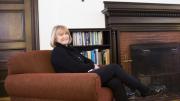1905
The Supreme Judicial Court puts a major obstacle in the way of a proposed alliance between Harvard and MIT, ruling that land occupied by the Institute cannot be built upon except in accordance with the deed of gift by which the real estate was acquired. Transferring any MIT real estate to a joint holding with Harvard thus becomes impossible.
1925
The Crimson publishes its first Confidential Guide, offering frank advice and opinions about courses from an undergraduate perspective.
1930
Due to significant thefts of books from the stacks, Widener Library has instituted a new policy: requiring that all books and bags be inspected at the library exits.
1940
The Democratic Party offers an all-Harvard ticket: Franklin Delano Roosevelt ’04, LL.D. ’29, and Henry A. Wallace, LL.D. ’35. Although Republican candidate Wendell Willkie declares, “We’ve had enough of Harvard; let’s have a little of Illinois and Indiana common sense,” the editors note that Willkie buttons predominate on undergraduate lapels.
1955
George A. Buttrick, Plummer professor of Christian morals and preacher to the University, welcomes female students to join Harvard undergraduates at morning prayer in Appleton Chapel. (Women had been required to sit apart in Memorial Church during chapel services.)
1960
Harvard alone wins an A from the American Association of University Professors for meeting its faculty pay minimums: $12,000 for a professor; $8,750 for an associate professor; $6,750 for an assistant professor.
1980
The $250-million Harvard Campaign, a five-year effort to buttress undergraduate education, the College faculty,…libraries, labs, and museums, public-policy programs, and “day-to-day upkeep of the College,” ends its first year with almost $86 million in gifts and pledges.
1990
To comply with the Drug-Free Schools and Communities Act Amendment of 1989, requiring colleges and universities to punish students and staff who violate drug and alcohol regulations or risk federal funding, Harvard provides both groups with information on drugs and alcohol compiled by the University Health Services.








